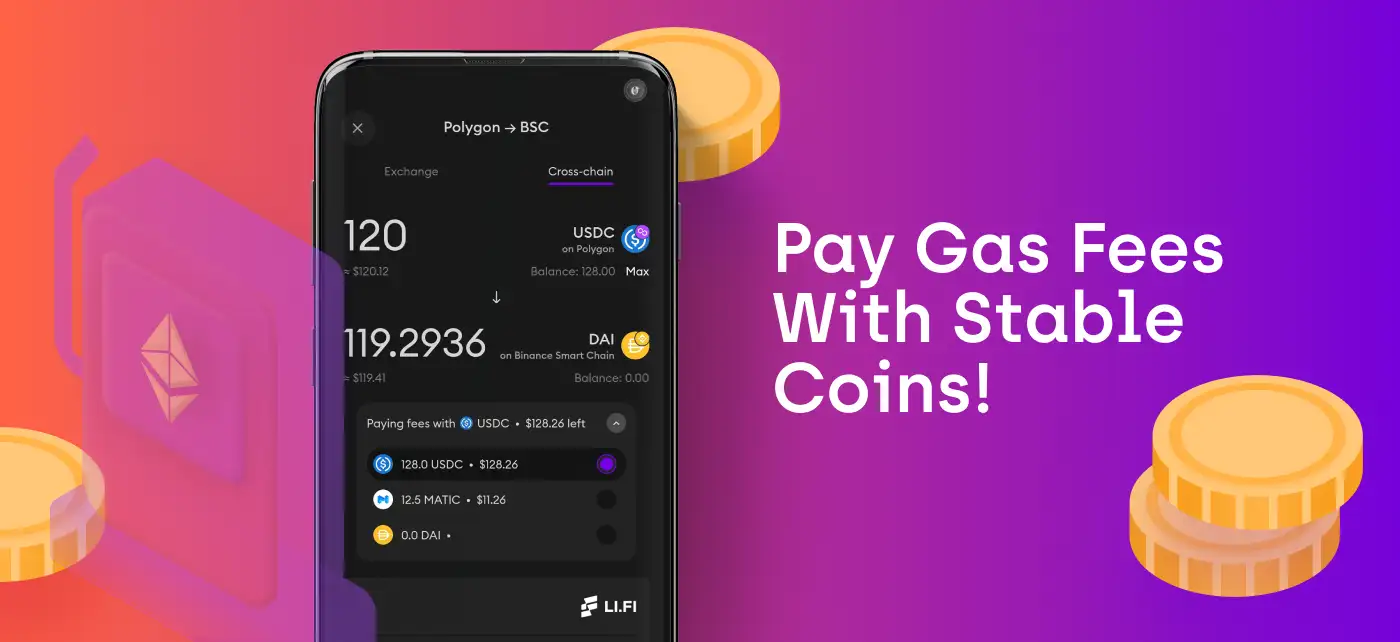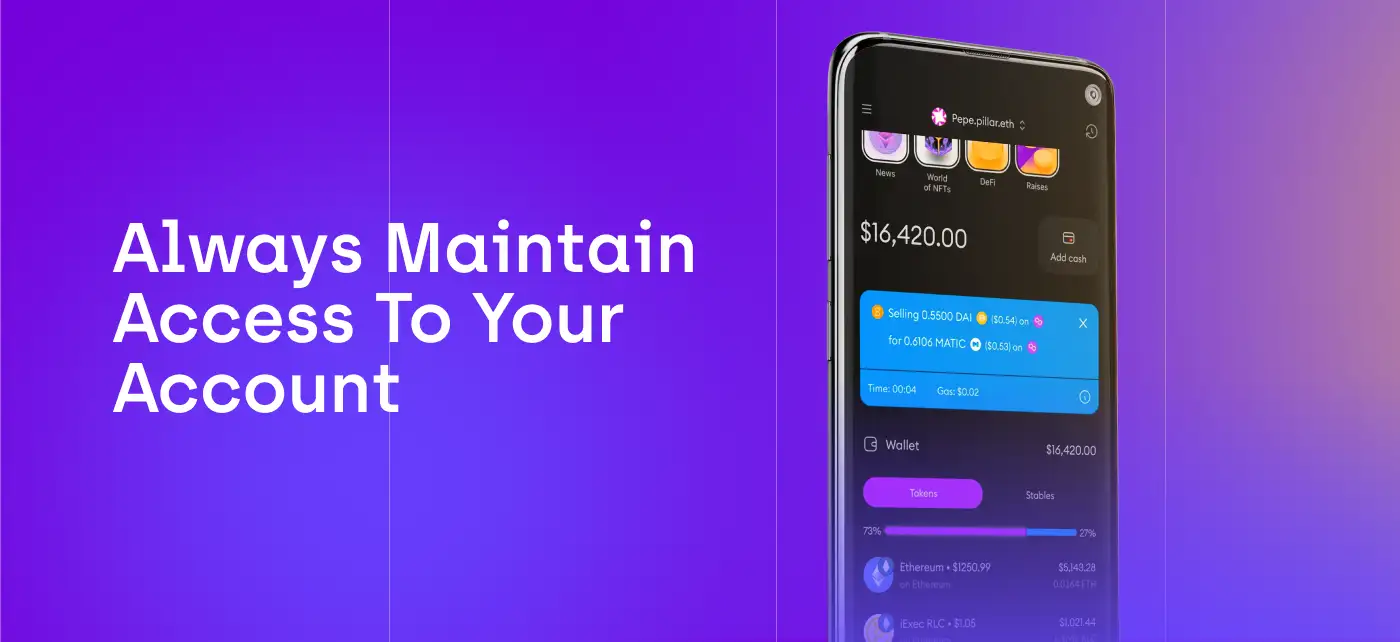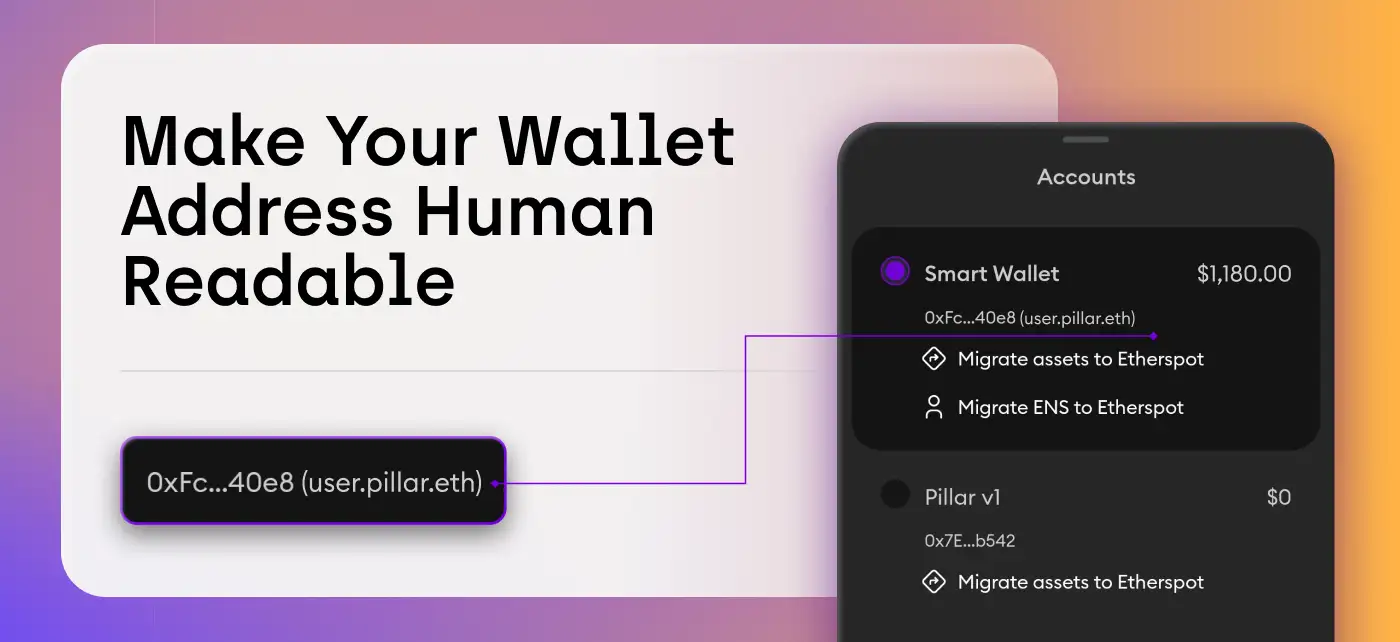About Pillar Smart Wallet
Pillar is a multichain DeFi wallet that aims to simplify and enhance the user experience in the decentralized finance (DeFi) space. The platform provides a self-custodial smart wallet enabling low fees, cross-chain swaps, and stablecoin gas payments, all within a unified DeFi environment. Powered by Etherspot.io, Pillar aims to make DeFi accessible and user-friendly for everyone.
Pillar is a comprehensive multichain DeFi wallet designed to streamline and enhance user interactions within the decentralized finance space. The project was conceived to tackle some of the most pressing issues in DeFi, such as high transaction fees, user complexity, and the fragmented nature of blockchain interactions. Pillar aims to create a seamless, user-friendly experience that makes DeFi accessible to everyone, regardless of their technical expertise.
The core offering of Pillar is its multichain wallet, which supports a variety of blockchain networks, including Ethereum, Binance Smart Chain, and Avalanche. This multichain capability is essential for providing users with the flexibility to manage assets across different ecosystems without needing multiple wallets. The wallet’s intuitive interface simplifies complex DeFi tasks, making it easier for users to engage with decentralized applications (dApps), manage their tokens, and perform cross-chain transactions.
One of the standout features of the Pillar Wallet is its ability to offer low-to-no gas fees for transactions. By leveraging advanced technologies and partnerships, Pillar can significantly reduce the costs associated with DeFi interactions. This feature is particularly beneficial for users who frequently engage in trading, staking, or liquidity provision, as it helps maximize their returns by minimizing transaction costs.
The Pillar project also emphasizes community governance, with the PLR token at its heart. Token holders are given the power to propose and vote on various initiatives and changes within the platform. This decentralized governance model ensures that the platform evolves according to the needs and preferences of its user base, fostering a sense of ownership and active participation among the community members.
Security is a paramount concern for Pillar. The platform employs a self-custodial wallet model, which means users retain full control over their private keys and assets. This approach eliminates the risks associated with centralized custodians and provides users with the highest level of security and privacy. The wallet includes robust security features, such as encryption, secure backup options, and biometric authentication, to further protect user assets.
Since its inception, Pillar has achieved several significant milestones. These include the integration of multiple blockchain networks, the launch of unique features like stablecoin gas payments, and the establishment of a vibrant community of users and developers. Pillar continues to innovate and expand its offerings, ensuring that it remains at the forefront of the DeFi revolution.
Competitors in the DeFi wallet space include well-known platforms like MetaMask and Trust Wallet. While these wallets offer similar functionalities, Pillar differentiates itself through its focus on multichain support, low transaction fees, and community-driven governance. This unique combination of features makes Pillar a compelling choice for users looking to maximize their DeFi experience.
In summary, Pillar is more than just a wallet; it is a comprehensive DeFi ecosystem designed to simplify, secure, and enhance the way users interact with the decentralized world. By addressing the key challenges in DeFi and offering innovative solutions, Pillar is poised to play a pivotal role in the ongoing evolution of decentralized finance.
- Multichain Support: Seamlessly manage assets across multiple blockchain networks.
- Low Fees: Enjoy low-to-no gas fees for transactions, making DeFi more affordable.
- Cross-Chain Swaps: Easily swap assets between different blockchain networks.
- Stablecoin Gas Payments: Use stablecoins to pay for transaction fees, providing cost stability.
- Community Governance: Participate in the platform’s decision-making process using PLR tokens.
- User-Friendly Interface: Intuitive design for managing tokens, dApps, and NFTs.
- Secure Self-Custody: Maintain full control over your assets with a self-custodial wallet.
To get started with Pillar, follow these steps:
- Download the Pillar Wallet from the official website.
- Create an account and set up your wallet by following the on-screen instructions.
- Secure your wallet by backing up your recovery phrase in a safe place.
- Explore the wallet’s features, including multichain support, cross-chain swaps, and stablecoin gas payments.
- Participate in the community by joining the Pillar Discord and following the latest updates on their Medium blog.
- Use your PLR tokens to vote on governance proposals and influence the platform’s development.
- Take advantage of educational resources and tutorials available on the Pillar Docs to make the most of the platform’s features.
Following these steps will help you get started with Pillar and leverage its powerful tools to enhance your DeFi experience.
Pillar Smart Wallet Reviews by Real Users
Pillar Smart Wallet FAQ
The Pillar Wallet integrates with various blockchain networks such as Ethereum, Binance Smart Chain, and Avalanche, allowing users to manage their assets across these ecosystems seamlessly.
Benefits of using the Pillar Wallet include low-to-no gas fees, cross-chain swaps, stablecoin gas payments, secure self-custody, and an intuitive user interface for managing tokens, dApps, and NFTs.
Yes, the Pillar Wallet employs a self-custodial model, giving users full control over their private keys and assets. It includes robust security features such as encryption, secure backups, and biometric authentication.
Non-transferable badges in the Pillar ecosystem recognize and record on-chain contributions, providing a foundation for community-driven governance and loyalty programs.
You can earn PLR tokens through various incentive programs such as staking, liquidity provision, and participating in community activities within the Pillar ecosystem.
You Might Also Like














